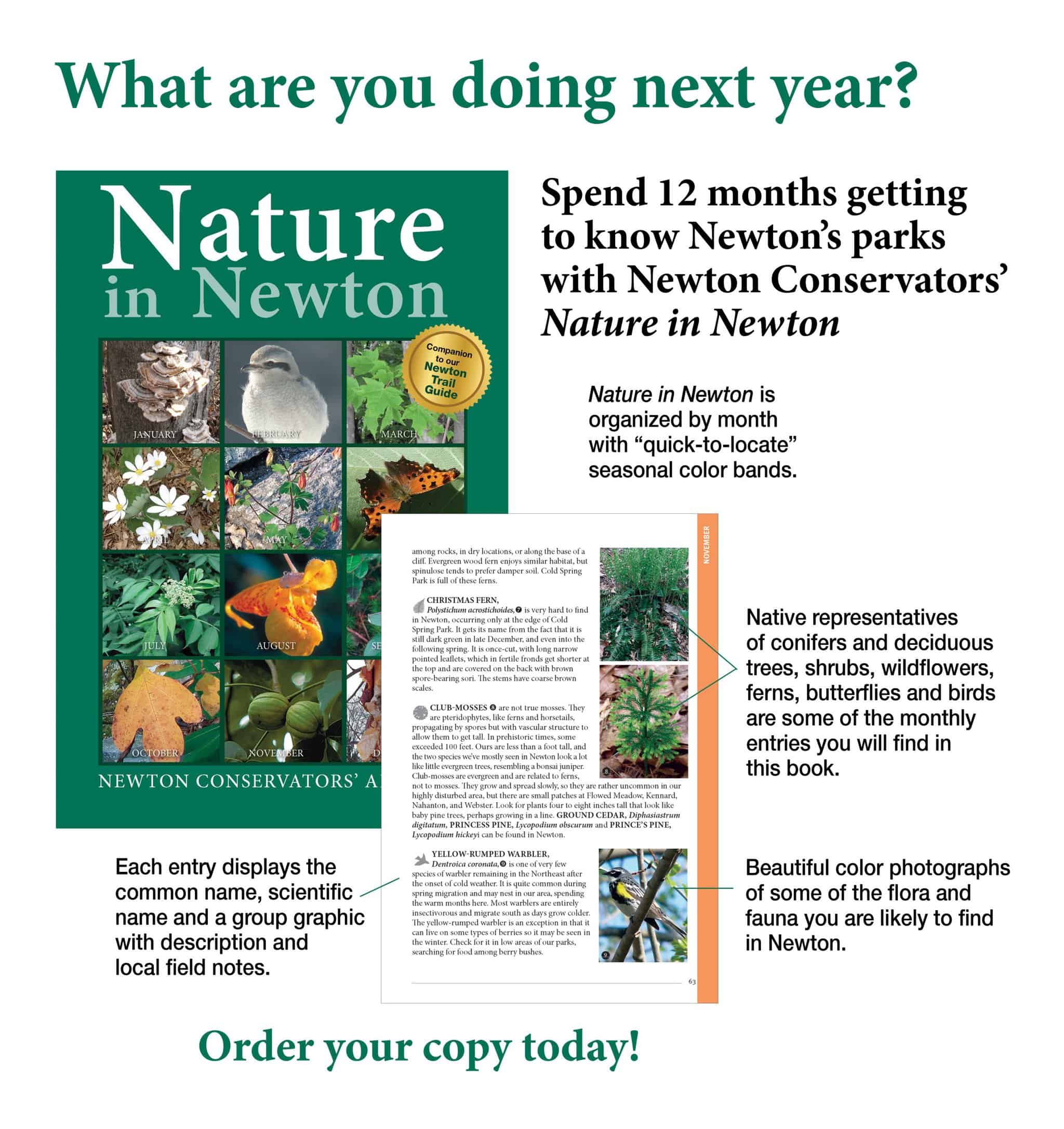
Almanac Order Form
Samples from the Almanac

AMERICAN CHESTNUT, Castanea dentata
July The American Chestnut was once the most common tree in the eastern woods. Chestnut is in the beech family and is related to the oaks that replaced it as

AMERICAN WOODCOCK, Scolopax minor
March The American Woodcock is most noticeable during its remarkable mating display, beginning in March as snow clears from overgrown fields. Check the meadows in Nahanton Park. At dusk, the

Aster
September ASTERS have star-shaped flower heads. There are many different kinds of aster and most of them bloom in late summer or early fall. A common aster of woods and

BLOODROOT, Sanguinaria canadensis
April Bloodroot, a true harbinger of spring, blooms in mid-April. The flower bud emerges with a single leaf wrapped around the stem. The leaf unfurls to reveal a pure white,

CARDINAL FLOWER, Lobelia cardinalis
August Cardinal flower is a striking plant standing two to five feet tall. It has scarlet petals the color of a cardinal’s robe. The flower is a long tube with

CEDAR WAXWING, Bombycilla cedrorum
September The Cedar Waxwing is a year-round bird in Massachusetts, often seen in September feeding on fruit left hanging on bare trees. It travels in flocks, moving from tree to

COMMON HAIR CAP MOSS, Polytrichum commune
February Common Hair Cap Moss forms lush green carpets on moist, slightly acid soils in the woodlands of Newton. This moss gets its name from the hairs that cover the

COMMON NIGHTHAWK, Chordeiles minor
August In past years one could often see and hear the common nighthawk as it circled in the glow of streetlights, picking off moths and other insects attracted by the

EASTERN COMMA BUTTERFLY, Polygonia comma
June Eastern Comma butterfly got its name from a white comma-shaped marking under its wing. The commas identify it as one of the “anglewing” butterflies. The margins of their wings

EASTERN SCREECH OWL, Megascops asio (or Otus asio)
October The Eastern Screech Owl is a year-round inhabitant of Newton. It comes in two colors, red or gray. You’ll rarely see it during daylight hours unless you’re lucky enough

FERNS IN THE SNOW
January Unlikely as it may seem, some ferns are easy to find despite a several-inch blanket of snow. Most ferns emerge in April, grow spores under their fronds in the

GREAT HORNED OWL, Bubo virginianus
December In some years during early morning hours of the Christmas Bird Count, the owl team has located as many as three or four great horned owls within the city
